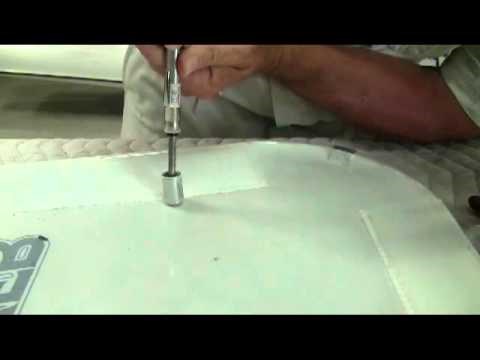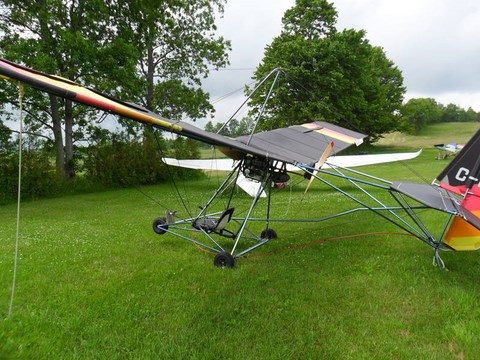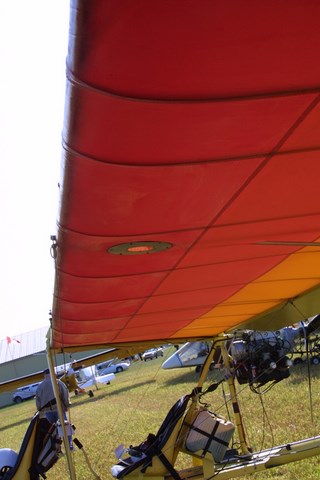Fabric testing ultralight aircraft dacron sails
Quicksilver MX Ultralight Aircraft Fabric Analysis
The dacron fabric sail was not maintained in accordance with the manufacturer's recommendations. Because the dacron fabric was often exposed to the elements and the sun's ultraviolet rays during the eight~ years since the sails had been replaced, it was severely weakened and it tore when it was exposed to aerodynamic flight loads.
Findings
1. The dacron fabric sail was not maintained in accordance with the manufacturer' 5 recommendations
2. The dacron fabric sail was severely faded and weakened by ultraviolet light.
3. The dacron fabric sail tore when it was exposed to aerodynamic flight loads.
4. The pilot lost control of the aircraft when the sail tore, and the aircraft crashed.
Causes and Contributing Factors
The dacron fabric sail was not maintained in accordance with the manufacturer's recommendations, and was severely weakened by exposure to the sun's ultraviolet rays. The dacron fabric tore when it was exposed to aerodynamic flight loads.
This report concludes the Transportation Safety Board's investigation into this occurrence.
Consequently, the Board, consisting of Chairperson, John W.. Stants, and members Zita Brunet and Hugh MacNeil, authorized the release of this report on 10 May. 1995
Question
How can one tell if their old sails are still airworthy? My sails are a bit bleached, but seem quite strong. Is there a home built device that will test the fabric?
Thanks,
Answer
Sail condition can be quite deceiving unless a proper test is performed. The fading of the sail definitely means degradation had occurred. If the blacks are grey and the reds are close to pink, the sail is shot and needs replaced.
(A quick check comparing the color of the top and bottom of the wing will tell you this.)
However, there are chemicals available to rejuvenate the colors which can mislead the eyeball type tests, since the faded colors means a bad sail but so-so colors don't mean a good one. The other concern is the thread used in the sail.
Quality sails will use thread that is immune to UV compared to the basic dacron material.
A sail made with non- stabilized thread will fail often in the seams while in use. Often an accident involving the wings, will make large tears in the sail, other than puncture tears. Any sail which exhibits such damage is not airworthy. A good sail will tear only when severely punched by jagged material from the accident, not due to the shear loads from the impact with an object.
Quicksilver Fabric Tester

The best place to check a sail is in an existing slit where battens enter pockets. If the existing slit can be propagated with little effort the sail is shot. Another method is to give the sail a good solid poke with a finger in a suspect area. If it tears, you did not hurt a 'good sail'.
A new piece of material will require almost more effort than you can muster to get the point to penetrate the material, the tester will be stopped as the 45 degree area tries to go through and the actual penetration will make a sound about like a 22 cal 'short' going off in a small pistol.
Whenever I sell the tester, I include a sample of new cloth to allow some comparative testing.
Testing The Fabric On A Challenger - The fabric test tool being used in this video is from Quicksilver and for more info on how to use the tool visit the Experimental Aircraft Association (EAA) website. There are a lot of really good instructional videos there that I don't think you have to be a member to access. The guy doing the testing is looking at buying this Challenger.
The sail cloth on an ultralight is dacron (just like other cloth covered planes but thinner than most). It is damaged by exposure to sunshine and weather. Sail cloth needs tested regularly (I do mine every 25 hours of operation or 3 months whichever comes first).


